外研版(2019)必修 第三册Unit 3 The world of science Presenting ideas 课件(共35张PPT)
文档属性
| 名称 | 外研版(2019)必修 第三册Unit 3 The world of science Presenting ideas 课件(共35张PPT) |  | |
| 格式 | pptx | ||
| 文件大小 | 5.1MB | ||
| 资源类型 | 教案 | ||
| 版本资源 | 外研版(2019) | ||
| 科目 | 英语 | ||
| 更新时间 | 2023-11-29 22:06:00 | ||
图片预览

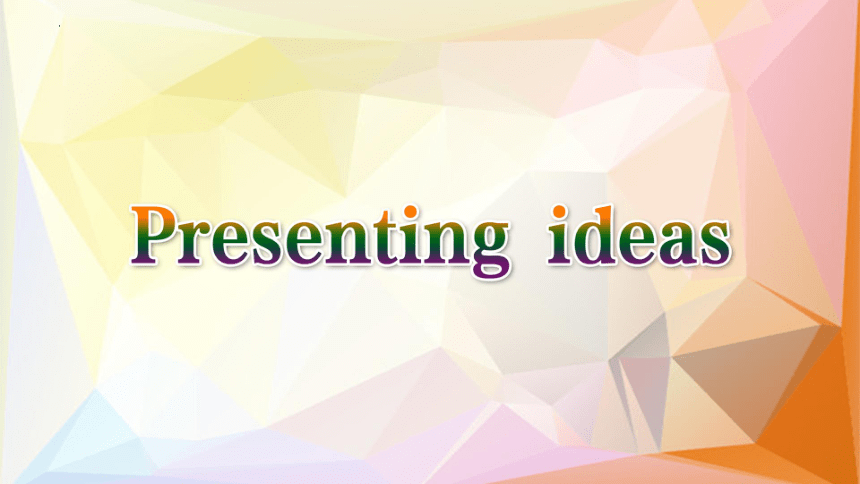
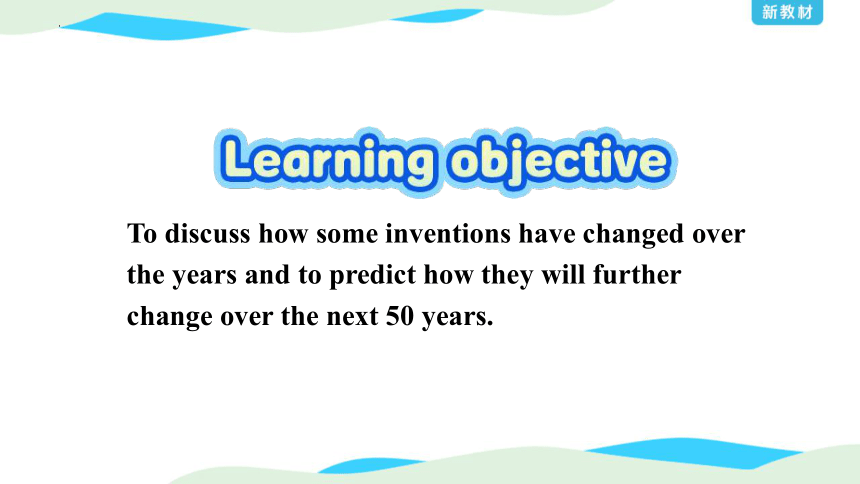
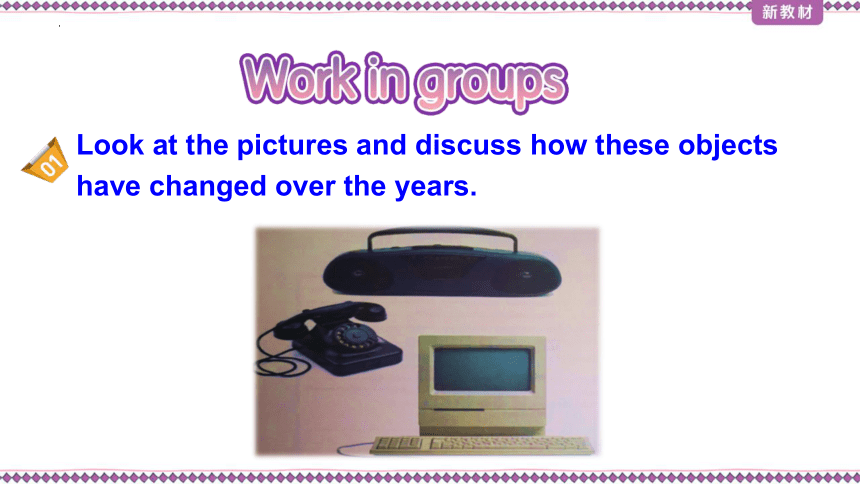
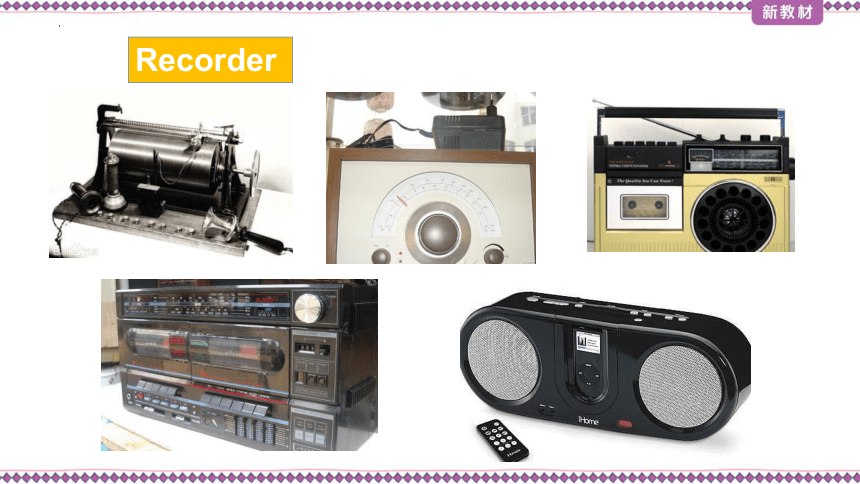
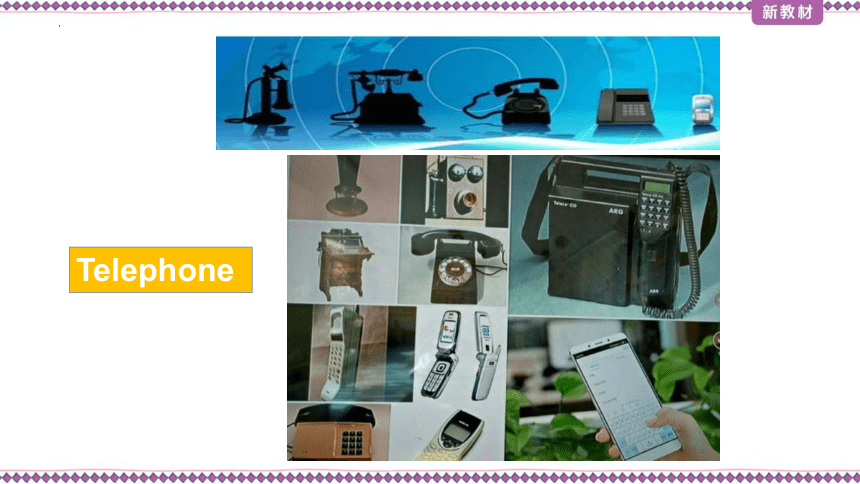
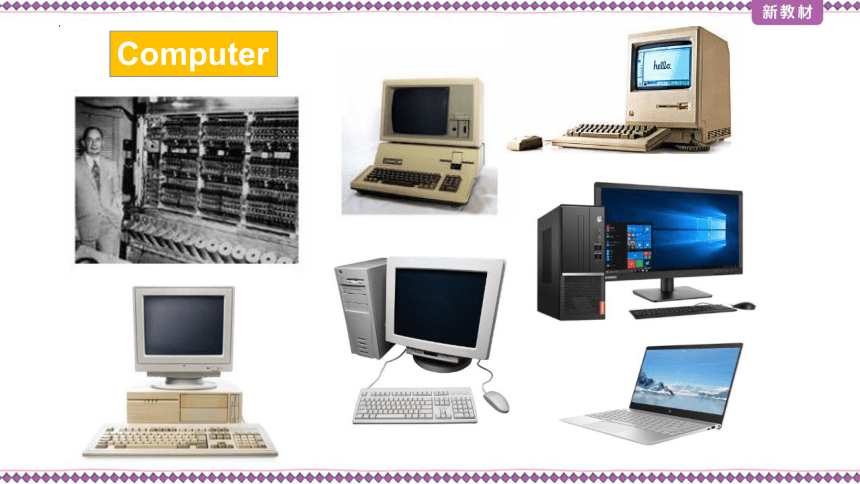
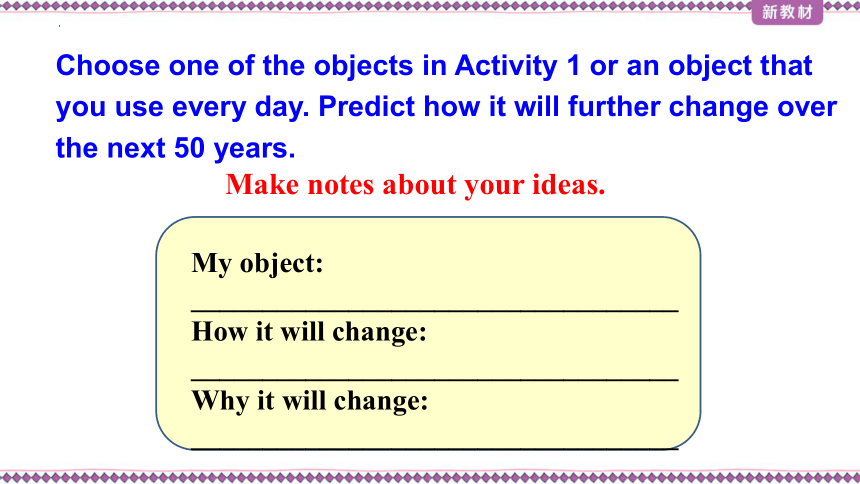
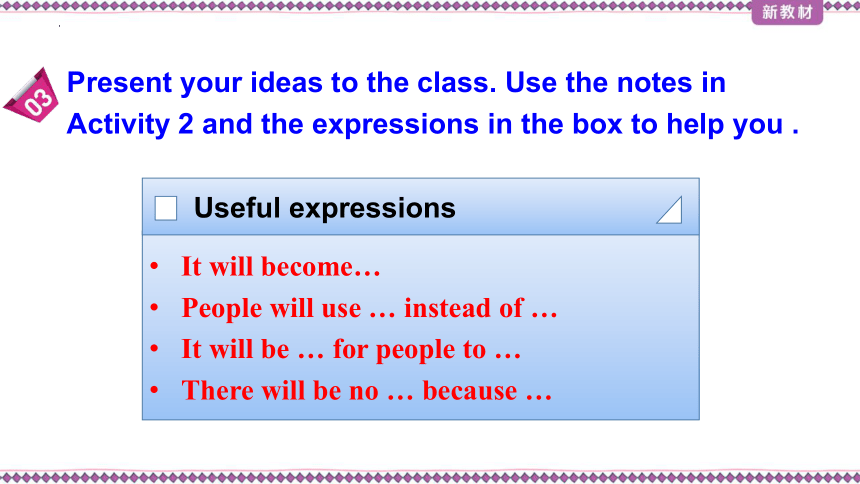

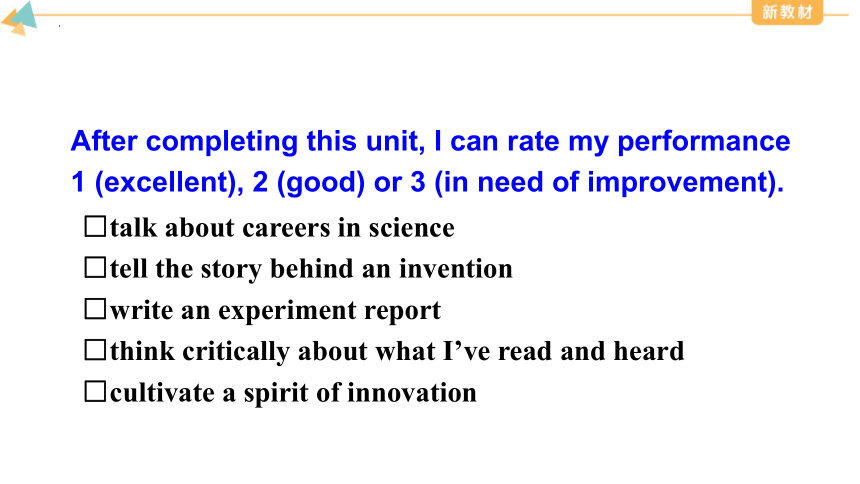

文档简介
(共35张PPT)
Unit 3
The World of Science
第1课时
To discuss how some inventions have changed over the years and to predict how they will further change over the next 50 years.
Look at the pictures and discuss how these objects have changed over the years.
Recorder
Telephone
Computer
Choose one of the objects in Activity 1 or an object that you use every day. Predict how it will further change over the next 50 years.
Make notes about your ideas.
My object:
__________________________________
How it will change: __________________________________
Why it will change: __________________________________
Present your ideas to the class. Use the notes in Activity 2 and the expressions in the box to help you .
It will become…
People will use … instead of …
It will be … for people to …
There will be no … because …
Useful expressions
After completing this unit, I can rate my performance 1 (excellent), 2 (good) or 3 (in need of improvement).
□talk about careers in science
□tell the story behind an invention
□write an experiment report
□think critically about what I’ve read and heard
□cultivate a spirit of innovation
I’ve learnt to make use of the following words and expressions:
_________________________________________________________________________________________________________________________________________________________
I still need to improve:
___________________________________________________________________________________________________________________________________________________
Finish your presentation.
Unit 3
The World of Science
第2课时
To read the instructions for the experiment
To learn to analyse the structure of an experiment instruction
To learn to write a report of the experiment
Read the instructions for the experiment and answer the questions.
Magic bottle
Writing an experiment report
Materials
A boiled egg
A glass bottle (bottleneck a bit smaller than the egg)
Hot water
Procedure
Remove the shell of the egg.
2. Carefully pour some hot water into the bottle.
the correct or usual way of doing sth. 步骤,程序
3. Shake the bottle gently.
4. Pour out the hot water.
5. Quickly put the egg on top of the bottle.
Results
Note: Do the experiment under the instructions of a teacher.
1. What do you think the results of this experiment will be
2. What can you learn from this experiment
The egg will squeeze into the bottle.
The experiment shows us the effects of air pressure. Air pressure indeed exists, and it is very powerful.
Complete the boxes with the information in Activity 5. Do further research if necessary.
Introduce the aim of the experiment.
This experiment is designed to _____________________________________________________________________________________________________________________
Introduction
show that air pressure indeed exists and it is very powerful.
Describe the materials used in the experiment and explain the procedure.
I prepared_____________________________________ to do this experiment.
Procedure : ________________________________________________________________________________________________________________________________________________________________________________________
Main body
a boiled egg, a bottle, some hot water
First, remove the shell of the egg. Then, carefully pour some hot water into the bottle and shake the bottle gently. At last, pour out the water and put the egg on the top of the bottle.
Report the results and what you have learnt.
After the experiment, I can draw the conclusion that ____________________________________________
____________________________________________.
Conclusion
Now write a report of the experiment.
the air pressure exists, and it is the force of the air that pushed the egg into the bottle
1. 审题定调:
实验报告属于说明文体裁,其最大特点就是知识性、严谨性和科学性。它是对客观事实的阐述,措辞应真实严谨,准确恰当。
2. 确定主体内容:
实验报告需要客观地介绍实验的整个过程。可以按照实验目的——实验器具——实验方法——实验结果——得出结论的顺序依次进行说明。介绍实验步骤时,可适当使用表示顺序的词汇,使叙述条理、清楚。
How to write an experiment report
3. 确定人称、时态:
描述实验时,时态用一般现在时,人称用第三人称单数。
4. 核定表达:
★实验目的:in order to find ...; The aim of the experiment is to find ...; with the purpose of discovering ...; do research on ...
★实验器具:beaker; Bunsen burner; crucible; glass rod (玻璃棒); iron nail; test tube; tong; balance; ...
★实验方法或过程:do the experiment as follows; first(ly); second(ly); third(ly); finally; then; next; after that; two hours’ later; after several days; ...
★实验结论:From this experiment we can conclude ...; in conclusion; draw a conclusion that ...; We can learn from the experiment ...; We can find out that ...; You can see / discover ...
★原因和结果:The reason is that ...; This is because ...; result from / in; lead to; cause; ...
The experiment is designed to prove whether air pressure really exists.
At the beginning of the experiment, I prepared the materials, including a boiled egg, a glass bottle whose neck is a bit smaller than the egg, and some hot water. With all the things prepared, the experiment began.
First, I removed the shell of the egg. Then, I carefully poured some hot water into the bottle, and shook the bottle gently.
After a few minutes, I poured out the hot water. Just at the same time, I quickly placed the egg on top of the bottle. To my amazement, the egg squeezed into the bottle at once.
After the experiment, I can draw the conclusion that air pressure indeed exists, and it is very powerful. It is the force of the air that pushed the egg into the bottle.
Write a report of an experiment that you’ve learned in your chemistry or physics class. If necessary, you can turn to the Internet for help.
If you can’t think out an experiment, here is a very simple one for you to refer to:
哪个瓶子滚得快?
两个完全相同的玻璃瓶,一个装满沙,另一个装满水,放在同一斜面上滑下,哪个瓶子滚得比较快?动手试试,想想看,为什么?
Unit 3
The World of Science
第1课时
To discuss how some inventions have changed over the years and to predict how they will further change over the next 50 years.
Look at the pictures and discuss how these objects have changed over the years.
Recorder
Telephone
Computer
Choose one of the objects in Activity 1 or an object that you use every day. Predict how it will further change over the next 50 years.
Make notes about your ideas.
My object:
__________________________________
How it will change: __________________________________
Why it will change: __________________________________
Present your ideas to the class. Use the notes in Activity 2 and the expressions in the box to help you .
It will become…
People will use … instead of …
It will be … for people to …
There will be no … because …
Useful expressions
After completing this unit, I can rate my performance 1 (excellent), 2 (good) or 3 (in need of improvement).
□talk about careers in science
□tell the story behind an invention
□write an experiment report
□think critically about what I’ve read and heard
□cultivate a spirit of innovation
I’ve learnt to make use of the following words and expressions:
_________________________________________________________________________________________________________________________________________________________
I still need to improve:
___________________________________________________________________________________________________________________________________________________
Finish your presentation.
Unit 3
The World of Science
第2课时
To read the instructions for the experiment
To learn to analyse the structure of an experiment instruction
To learn to write a report of the experiment
Read the instructions for the experiment and answer the questions.
Magic bottle
Writing an experiment report
Materials
A boiled egg
A glass bottle (bottleneck a bit smaller than the egg)
Hot water
Procedure
Remove the shell of the egg.
2. Carefully pour some hot water into the bottle.
the correct or usual way of doing sth. 步骤,程序
3. Shake the bottle gently.
4. Pour out the hot water.
5. Quickly put the egg on top of the bottle.
Results
Note: Do the experiment under the instructions of a teacher.
1. What do you think the results of this experiment will be
2. What can you learn from this experiment
The egg will squeeze into the bottle.
The experiment shows us the effects of air pressure. Air pressure indeed exists, and it is very powerful.
Complete the boxes with the information in Activity 5. Do further research if necessary.
Introduce the aim of the experiment.
This experiment is designed to _____________________________________________________________________________________________________________________
Introduction
show that air pressure indeed exists and it is very powerful.
Describe the materials used in the experiment and explain the procedure.
I prepared_____________________________________ to do this experiment.
Procedure : ________________________________________________________________________________________________________________________________________________________________________________________
Main body
a boiled egg, a bottle, some hot water
First, remove the shell of the egg. Then, carefully pour some hot water into the bottle and shake the bottle gently. At last, pour out the water and put the egg on the top of the bottle.
Report the results and what you have learnt.
After the experiment, I can draw the conclusion that ____________________________________________
____________________________________________.
Conclusion
Now write a report of the experiment.
the air pressure exists, and it is the force of the air that pushed the egg into the bottle
1. 审题定调:
实验报告属于说明文体裁,其最大特点就是知识性、严谨性和科学性。它是对客观事实的阐述,措辞应真实严谨,准确恰当。
2. 确定主体内容:
实验报告需要客观地介绍实验的整个过程。可以按照实验目的——实验器具——实验方法——实验结果——得出结论的顺序依次进行说明。介绍实验步骤时,可适当使用表示顺序的词汇,使叙述条理、清楚。
How to write an experiment report
3. 确定人称、时态:
描述实验时,时态用一般现在时,人称用第三人称单数。
4. 核定表达:
★实验目的:in order to find ...; The aim of the experiment is to find ...; with the purpose of discovering ...; do research on ...
★实验器具:beaker; Bunsen burner; crucible; glass rod (玻璃棒); iron nail; test tube; tong; balance; ...
★实验方法或过程:do the experiment as follows; first(ly); second(ly); third(ly); finally; then; next; after that; two hours’ later; after several days; ...
★实验结论:From this experiment we can conclude ...; in conclusion; draw a conclusion that ...; We can learn from the experiment ...; We can find out that ...; You can see / discover ...
★原因和结果:The reason is that ...; This is because ...; result from / in; lead to; cause; ...
The experiment is designed to prove whether air pressure really exists.
At the beginning of the experiment, I prepared the materials, including a boiled egg, a glass bottle whose neck is a bit smaller than the egg, and some hot water. With all the things prepared, the experiment began.
First, I removed the shell of the egg. Then, I carefully poured some hot water into the bottle, and shook the bottle gently.
After a few minutes, I poured out the hot water. Just at the same time, I quickly placed the egg on top of the bottle. To my amazement, the egg squeezed into the bottle at once.
After the experiment, I can draw the conclusion that air pressure indeed exists, and it is very powerful. It is the force of the air that pushed the egg into the bottle.
Write a report of an experiment that you’ve learned in your chemistry or physics class. If necessary, you can turn to the Internet for help.
If you can’t think out an experiment, here is a very simple one for you to refer to:
哪个瓶子滚得快?
两个完全相同的玻璃瓶,一个装满沙,另一个装满水,放在同一斜面上滑下,哪个瓶子滚得比较快?动手试试,想想看,为什么?
